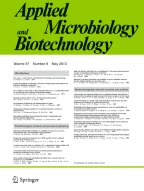Abstract
Chemical riboflavin production, successfully used for decades, is in the course of being replaced by microbial processes. These promise to save half the costs, reduce waste and energy requirements, and use renewable resources like sugar or plant oil. Three microorganisms are currently in use for industrial riboflavin production. The hemiascomycetes Ashbya gossypii, a filamentous fungus, and Candida famata, a yeast, are naturally occurring overproducers of this vitamin. To obtain riboflavin production with the Gram-positive bacterium Bacillus subtilis requires at least the deregulation of purine synthesis and a mutation in a flavokinase/FAD-synthetase. It is common to all three organisms that riboflavin production is recognizable by the yellow color of the colonies. This is an important tool for the screening of improved mutants. Antimetabolites like itaconate, which inhibits the isocitrate lyase in A. gossypii, tubercidin, which inhibits purine biosynthesis in C. famata, or roseoflavin, a structural analog of riboflavin used for B. subtilis, have been applied successfully for mutant selections. The production of riboflavin by the two fungi seems to be limited by precursor supply, as was concluded from feeding and gene-overexpression experiments. Although flux studies in B. subtilis revealed an increase both in maintenance metabolism and in the oxidative part of the pentose phosphate pathway, the major limitation there seems to be the riboflavin pathway. Multiple copies of the rib genes and promoter replacements are necessary to achieve competitive productivity.
Similar content being viewed by others
Author information
Authors and Affiliations
Additional information
Received: 19 November 1999 / Accepted: 21 December 1999
Rights and permissions
About this article
Cite this article
Stahmann, KP., Revuelta, J. & Seulberger, H. Three biotechnical processes using Ashbya gossypii, Candida famata, or Bacillus subtilis compete with chemical riboflavin production. Appl Microbiol Biotechnol 53, 509–516 (2000). https://doi.org/10.1007/s002530051649
Issue Date:
DOI: https://doi.org/10.1007/s002530051649
